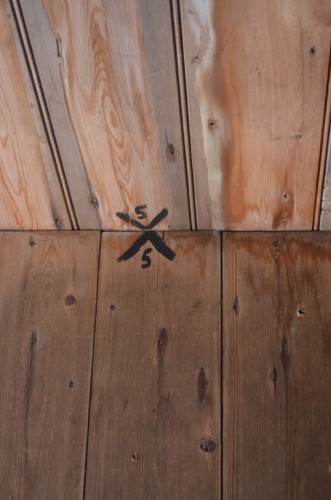Research Update
Although it is Thanksgiving in the United States today, Thanksgiving isn't until tomorrow here in McMurdo Station. Our team continues to make preparations for their upcoming trip to the Barwick Valley. I also started preparing for our upcoming webinar on December 1st. Although we've kept busy with work, the day has been more relaxed than the past few days.
Discovery Hut
Discovery Hut is positioned on Hut Point, overlooking McMurdo Sound. It is a historic hut, built in 1902, by Robert Falcoln Scott and his team during the Discovery Expedition. After recently being restored by the Antarctic Heritage Trust, I was able to visit the tour during an open house.

Frozen in Time
Visiting Discovery Hut is exciting because everything is still frozen in time. The hut was designed by the appointed leader of the scientific staff of the Discovery expedition, Professor Gregory. However, he resigned before Scott and his team sailed South from England. The hut was made by an Australian in Sydney and bought for about 360 pounds. It is 11.3 square meters in area and made from Douglas fir and Scots pine and is pre-fabricated--matching numbers help identify how to put it together.

The hut was the largest of three brought to Antarctica in 1902; Scott's team also packed a single-roomed hut for magnetic observations and another small hut for seismography. Although the driving force behind Scott's Discovery Expedition was to reach the South Pole, Scott and his team led scientific and geographic research expeditions as well.
A Difficult Abode
Scott and his team landed in McMurdo Sound on February 8th and Discovery Hut was completed by March 8th. It was not an easy task--a solid layer of frozen soil lay underneath the volcanic debris which had to be dug out with picks and shovels. Once the hut was completed, it was not used as a home. The hut was too cold and, as Scott wrote, "on account of its size and the necessity of economizing coal, it is very difficult to keep a working temperature inside; consequently it has not been available for some of the purposes for which we had hoped to use it," (Scott, 1905). Therefore, the hut was used for scientific observations, to repair tools and dry supplies, skin animals and also to entertain (it was also known as "Royal Terror Theatre").

The Discovery Expedition team, therefore, lived on their ship which was frozen into the sound for two years. 47 officers, five scientists and four civilians lived on the ship. On March 11, 1902, seaman George Vince died when he fell over an ice cliff, leaving 55 residents on the boat.

The Discovery team led expeditions and conducted scientific investigations over the first year. In January of 1903 a relief ship arrived and Scott sent back nine men, including Ernest Shackleton, who was sick with scurvy and did not get along with Scott. The remaining team wintered another year on the Discovery ship, still frozen in the ice. The Discovery ship was finally freed from the ice on February 14, 1904, two years after its arrival with the help of wind, currents and explosives. After memorializing Vince with a cross at Hut Point, the team returned back to England, arriving in April.

New House Guests
Discovery Hut was used by later expeditioners. Ernest Shackleton occupied Discovery Hut in his 1907-1909 attempt to reach the South Pole. After returning from a failed attempt, they tried to burn one of the smaller scientific huts for warmth and rearranged materials inside Discovery Hut to stay warm. Scott also returned to Discovery Hut in 1910. He arrived to find it filled with ice, which his team eventually dug out. Ponies were kept outside the hut in stables and the team kept warm by burning wood and blubber meat. Shackleton returned to the other side of Antarctica in 1914 while a support crew used Discovery Hut for shelter as they laid supply bases (which were never used since Shackleton's ship was stuck in the sea ice). Shackleton's support crew used Discovery Hut for two years, eventually running low on fuel and losing three men to the elements.

Changes Since 2011
This is my second time visiting Discovery Hut. Since then, the hut has been restored. You can see a video of the hut from 2011 in this jounral in the video below:
http://
Life in Antarctica
Recycling is taken seriously here at McMurdo Station and so everything is shipped back to the U.S. Therefore, you can easily find a place to separate your trash!

Brought to you by...
Today's journal is brought to you by Mr. Dambrov's class from the Bethel School District in Oregon.

Resources:
Antarctic Heritage Trust, Conservation Plan: Discovery Hut, Hut Point, Christchurch, May 2004 Accessed 10 November, 2015. https://www.nzaht.org/content/library/The_History_of_the_Expedition.pdf
Scott, RF, The Voyage of the Discovery, Thomas Nelson and Sons, London, 1905, Vol I, p 306.

Comments